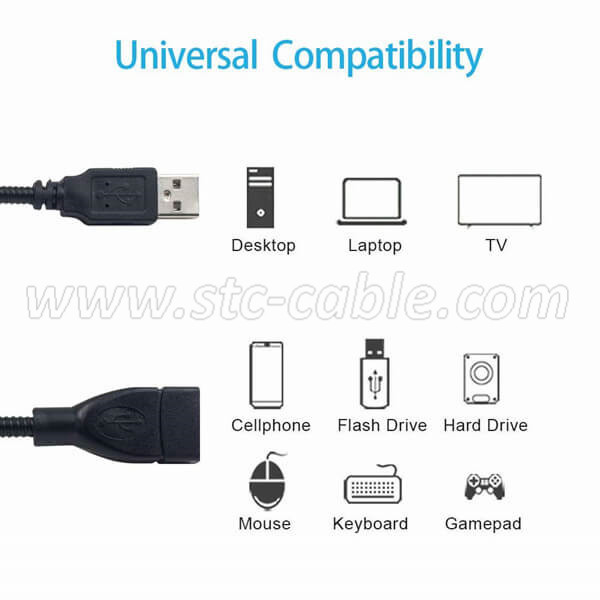How to select a USB 2.0 cable?
When selecting a USB 2.0 cable, it's important to consider a few key factors to ensure compatibility and performance:
1. Connector Type
USB-A to USB-B: Common for printers and some external hard drives.
USB-A to Micro-B: Often used for smartphones, cameras, and other small devices.
USB-A to Mini-B: Older format for some cameras and older devices.
USB-A to USB-A: Used for certain data transfers or charging.
USB-A to USB-C: For newer devices, although USB 3.0 and above are typically preferred here.
Make sure the cable's connectors match the ports of the devices you plan to connect.
2. Cable Length
USB 2.0 cables come in a variety of lengths, usually ranging from 0.5m to 5m.
Longer cables may experience signal degradation, so choose the shortest length that fits your needs.
3. Build Quality
Opt for cables with durable outer sheaths, especially if you need flexibility or extra protection. Braided cables or those with thicker insulation tend to last longer.
Gold-plated connectors offer better durability and corrosion resistance.
4. Data Transfer Speed
USB 2.0 supports a maximum data transfer rate of 480 Mbps (Megabits per second).
If you need faster speeds, you may want to consider USB 3.0 or higher, but ensure that both your devices support it.
5. Power Requirements
USB 2.0 can deliver up to 500 mA (milliamps) of power. If you need more power for charging or running high-power devices, look into USB 3.0 or special power-delivery cables.
6. Brand and Reviews
Trusted brands often offer better quality and durability. Look at reviews to assess real-world performance and reliability.
7. Certifications
Check for USB-IF certification (USB Implementers Forum). Certified cables meet industry standards for performance and safety.
By considering these factors, you'll ensure the USB 2.0 cable you choose is well-suited to your needs.
Send your message to us:
Post time: Sep-24-2024
